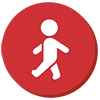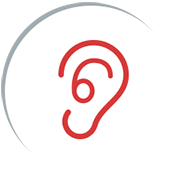Before you can treat a fever it is important to accurately measure your child’s temperature. Here are a few easy techniques to get you started.
When a child is sick, the first question you may get at the doctor’s office is what your child’s temperature is and how you measured it. There are a variety of thermometers and ways to take a child’s temperature, so it’s helpful to know what’s recommended for each age.
Basic digital thermometers are a good choice. They are accurate, fast, easy to use, inexpensive, and can be used for a variety of temperature-taking methods: in the bottom (rectal), by mouth (oral), or under the arm. NOTE : A thermometer used for taking temperatures should not be used for other methods (e.g. a thermometer used for taking temperatures orally should not be used rectally, or vice versa).
You can take the following quick, easy steps as a first line of defense to help get fast relief. If these steps don’t work, try an effective headache reliever such as TYLENOL®.

Babies under age 3 months
The rectal method is the most reliable for young infants. If your baby is under 3 months of age and has a temperature of 38.0°C (100.4°F) or higher, contact your doctor right away. Babies this young need to be checked for infection or disease.
To take a rectal temperature:
Wash the thermometer, then rinse with cool water
Coat the tip with petroleum jelly
Place your child either on his/her back with knees bent or on his/her belly
Holding your child still, insert the thermometer ½ to 1 inch into the bottom
Hold until it beeps, then remove for reading

Children under age 4 years
Active, older children may not cooperate well with the rectal method. Another option is the underarm method, but it is less accurate. An underarm reading can be as much as 2 degrees lower than an internal rectal reading.
To take an underarm temperature:
Remove your child’s shirt
Make sure the underarm is dry
Press the thermometer tip against the armpit
Keep your child’s arm firmly against her side
Hold until it beeps, then remove for reading

Children ages 4 & up
For older kids, a temperature taken by mouth is accurate when taken properly (your child must be able to hold the thermometer in place long enough to get a reading).
To take an oral temperature:
Wash the thermometer, then rinse with cool water
Put the tip under your child’s tongue, near the back of the mouth
Hold in place until it beeps, then remove for reading
If you have questions or concerns, talk to your doctor.
Fevers could be a sign that your child's body is fighting off an infection. Most fevers are caused by common childhood illnesses like colds, flu, ear infections, bronchitis, and tonsillitis. Usually, a fever is just a symptom of an infection or other condition. In most cases, a fever will go away on its own in 2 or 3 days.
What is Normal vs. Fever Temperature
Although the average normal body temperature is 37°C (98.6°F), temperatures naturally rise and fall throughout the day. It is not uncommon to wake up in the morning with a relatively low temperature of 36.3°C (97.4°F) which rises to 37.6°C (99.6°F) by the late afternoon. Your child has their own normal temperature range which may be slightly different from another child. However, temperatures rising above the following thresholds may be indicative of a fever.
Remember, if your baby is under 3 months of age and has a temperature of 38.0°C (100.4°F) or higher, you should call your doctor right away. In younger babies, it’s important to check for infection or disease when a fever arises.
What temperature indicates a FEVER?

Orally
Higher than 37.5°C (99.5°F)

In the Ear
Higher than 38.0°C (100.4°F)

In the Rectum
Higher than 38.0°C (100.4°F)

In the Armpit
Higher than 37.3°C (99.1°F)
Call your Doctor if your child’s temperature exceeds 38.3°C (101°F) for more than 24 hours
Infants' and Children's TYLENOL® contain acetaminophen, which can help to reduce fever and make your child more comfortable.† When talking to your child’s doctor, make sure to let them know which type and strength of medicine you're giving to your child, if any.
†To be sure this product is right for your child, always read and follow the label.
This information does not constitute a diagnosis of any medical condition or medical advice. Do not substitute the information within this article for medical advice. Always consult your physician or health care provider if you have medical or health questions or concerns.
